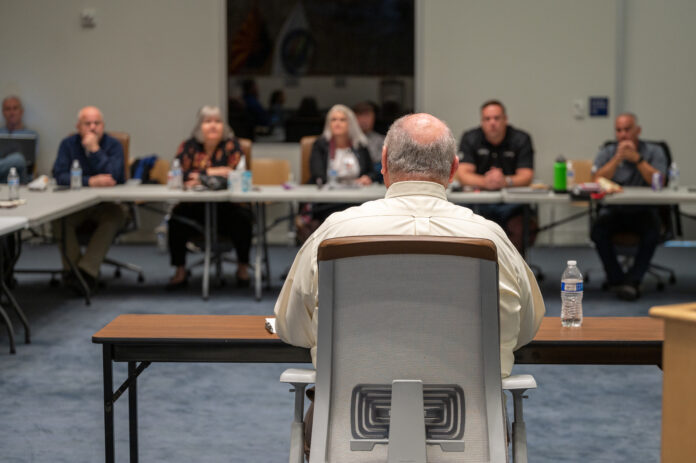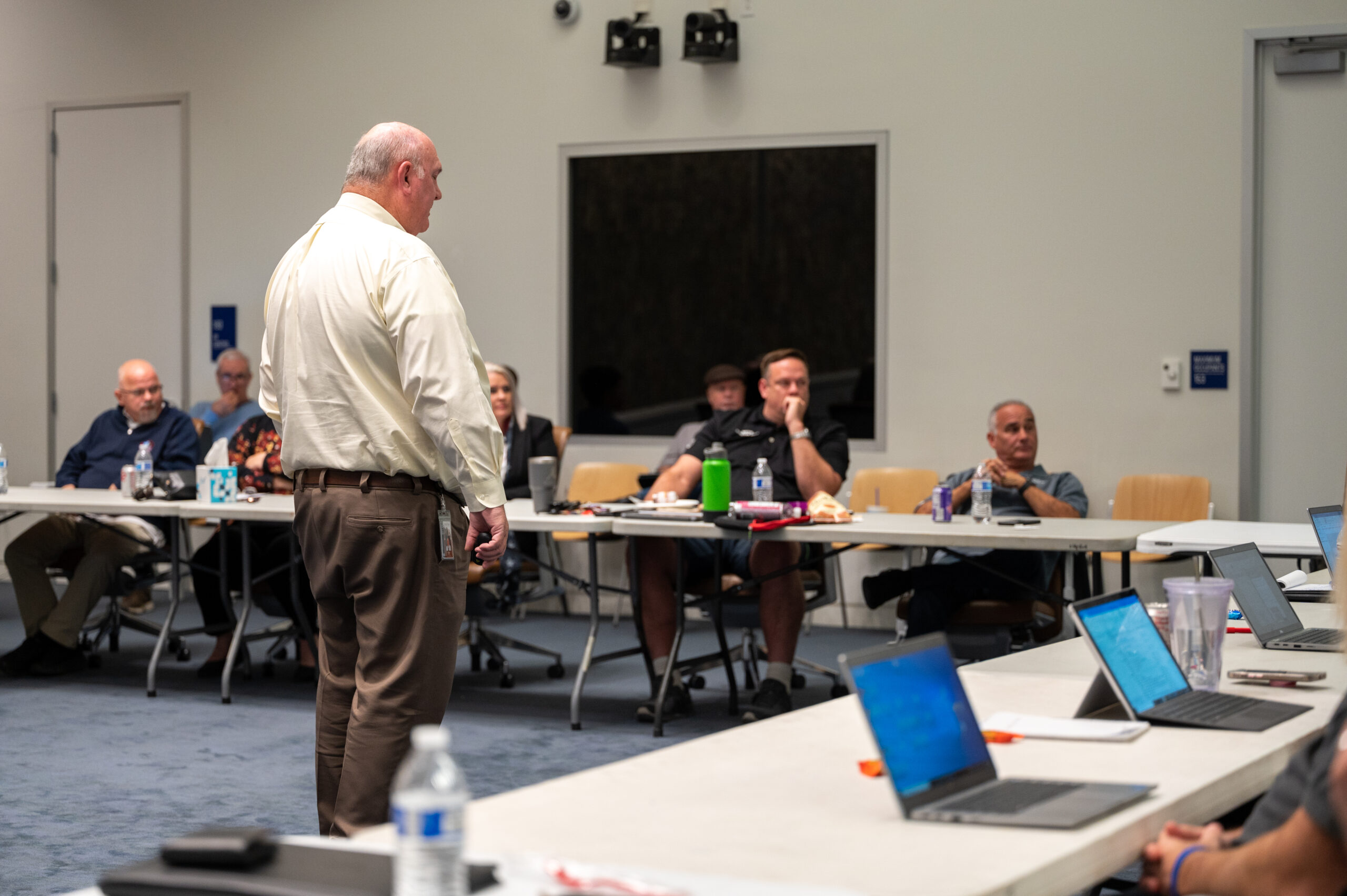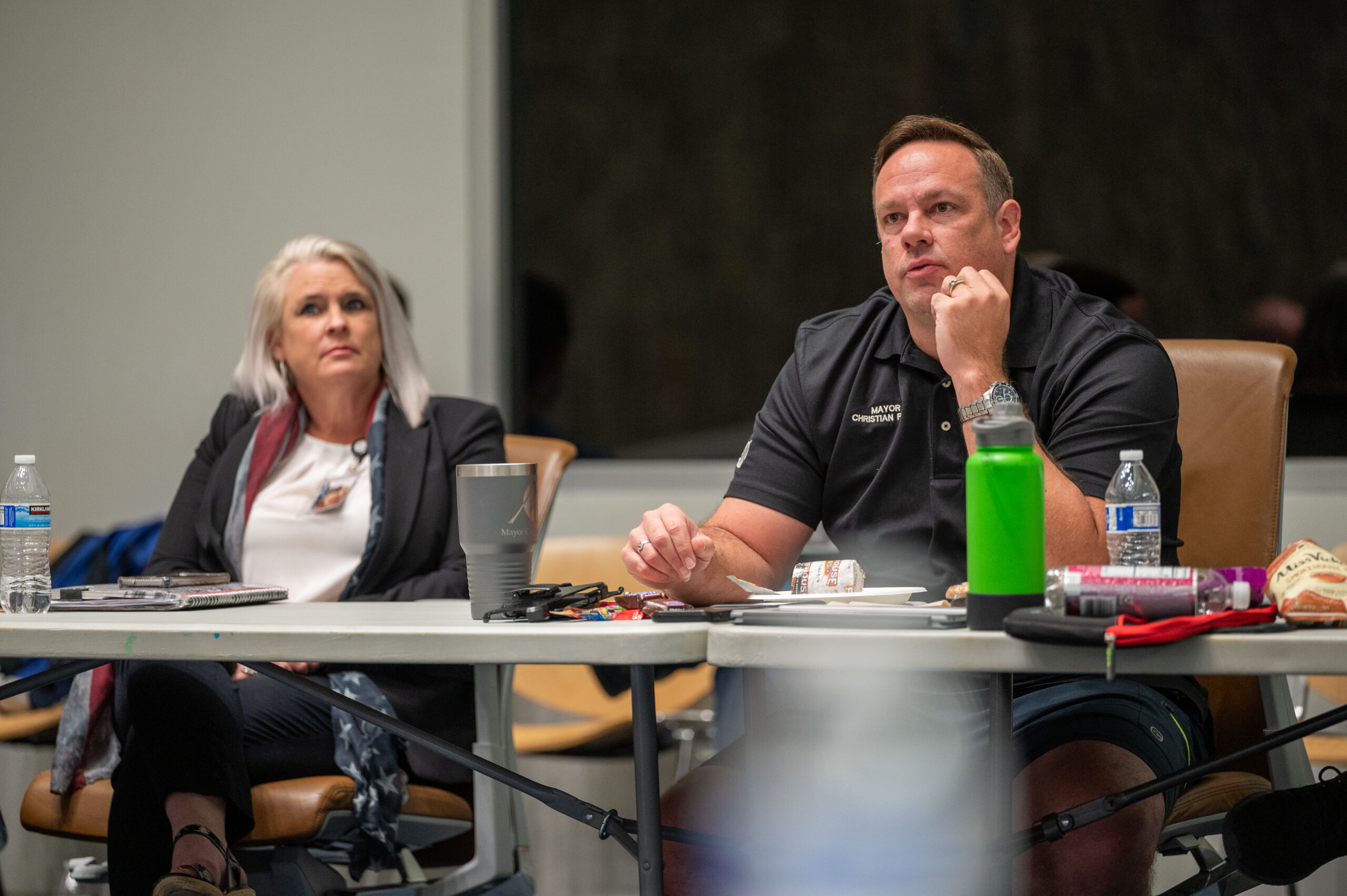
Each year, city manager Rick Horst holds a futures planning meeting for the city council to outline city priorities for the coming year and get their blessing to pursue certain avenues of progress for the city.
Last year’s meeting was full of bold visions such as a large, multi-purpose stadium at Copper Sky and a massive City Center development project in the current Santa Cruz Wash floodplain; major infrastructure projects like the Loop Road around the city and an overpass on Green Road; and some pie-in-the-sky dreams such as a light rail train between Maricopa and the Valley.
This year’s meeting steered more toward the pragmatic. In fact, a sign at the front of the room during Horst’s presentation outlined his feelings on growth and planning.
“The best way to predict the future is to create it,” it said, and Horst reiterated during his presentation. “This meeting is about economics – the study of scarcity, and how we ensure we are able to continue to grow without suffering to do so.”
Horst laid out, and the council endorsed, a list of priorities for the coming year that included:
– Managing the city’s booming growth;
– Ensuring the city continues to be fiscally responsible;
– Re-envisioning how streets are designed and built;
– Working with Global Water Resources to ensure a reliable water supply;
– Pursuing annexation of land around the city whose owners want to join the city;
– Adding city services like a 9-1-1 call center; a 3-1-1 city information line; community responders in lieu of police on certain calls; and enhancing the city’s emergency management capabilities.
Horst stressed that since the city is going to continue to grow, it will be important to acquire the land necessary for future city services such as fire and police stations, a new city hall; a future police annex; cemeteries; and parks and open space.
He acknowledged that while purchasing such land is speculative, it also protects the city against the future rise in land costs and offers a better return on the investment than the State Treasury pool does.
There were several projects noted as priorities for the immediate future that Horst believes will have the greatest impact on the city. Four of those – the Green Road overpass, the Loop Road, the East-West Corridor and the Interstate 11 corridor – area transportation related. The other two he cited are enhancement of public utilities and the Santa Cruz Wash flood mitigation project.

ongoing expense for the city that continues indefinitely. One way he will do this is to review the impact fees paid by commercial and residential developers to ensure the fees are covering the budgetary impact on the city. He also got the council’s blessing to begin putting together a new water impact fee that would be imposed to help ensure the city’s water supply in the future.
“One idea worth thinking about would be having developers donate land designated for fire stations, police stations and parks rather than paying cash impact fees,” Horst said. Problem is you don’t know if it will be in the right place.
Horst cited an example of how the city might use funds to create revenue rather than expenses.
“The mayor wants to acquire land to build spec buildings,” Horst said. “That’s what all the economic development people are saying is needed here in town. If we could build our own office buildings and lease them, it would be a revenue generator, not an expense.”

“Change has to be the status quo,” he said. “If you always do what you’ve always done, you’ll always get what you’ve always got. The benefit of being a young city is we get to learn from all those cities that came before us and the mistakes they made. We get to be Maricopa.”






![Who’s the Best Mom InMaricopa? Nominate now! Marlene Marshall, Christina Olivares, and Meghan Bremer. [Bryan Mordt]](https://www.inmaricopa.com/wp-content/uploads/2023/05/BCM_8465-218x150.jpg)


![Alleged car thief released without charges Phoenix police stop a stolen vehicle on April 20, 2024. [Facebook]](https://www.inmaricopa.com/wp-content/uploads/2024/04/IMG_5040-218x150.jpg)







Spec buildings????? You have lost touch with reality, Rick and Mayor Wonka….the city as landlord? Priceless.
Dear NYTOAZ, as you obviously didn’t participate in the planning meeting and did not receive the context, please allow me to fill you in. You see the reason for this suggestion is we are the only state out of 50, that is NOT allowed to use TIF (Tax Increment Financing) to help attract businesses. Therefore our competitiveness to attract big biz/Industry is reduced compared to other states that have building inventory ready. But everyday we get leads/proposals from our Economic Development partners from BIG COMPANIES that are begging for 100,000, or 200,000 or 500,000, even 1million sq ft of space ready to move into in less than a 3 months here in Maricopa. But we don’t have any…..
Post recession banks do not lend on spec but a city with its own monies could then could sell, NOT LEASE (Unless it was better for the Taxpayer) the finished building, land to the next one that asks. Do them one at a time so as to never be over extended or to be carrying too much of anything, but be able to attract more industry that is looking for this existing product that does not exist currently in Maricopa today, and that the private sector refuses to provide! So yes it makes PERFECT SENSE! We’ve gotta think outside the box where we can or we’ll only get more of the same.
Mayor,
Do not waste any energy on NYTOAZ. We can only hope NYTOAZ will soon change to AZTOVENEZUALA.